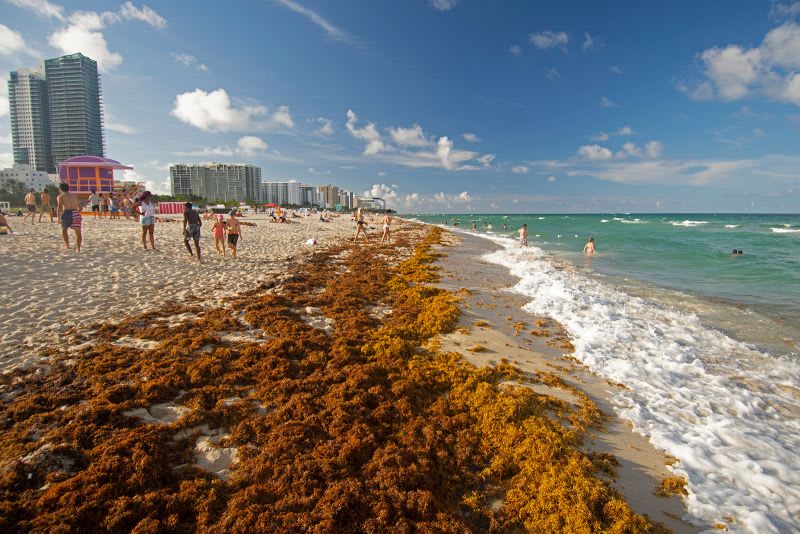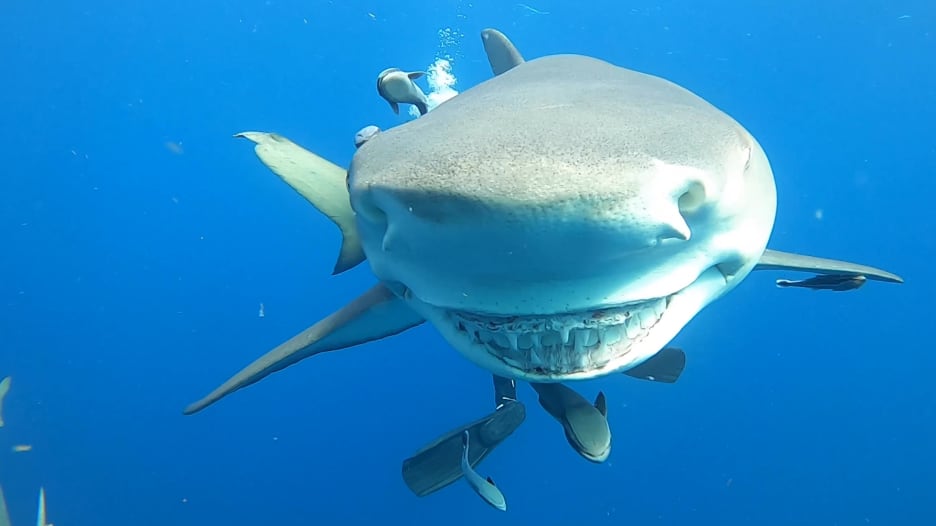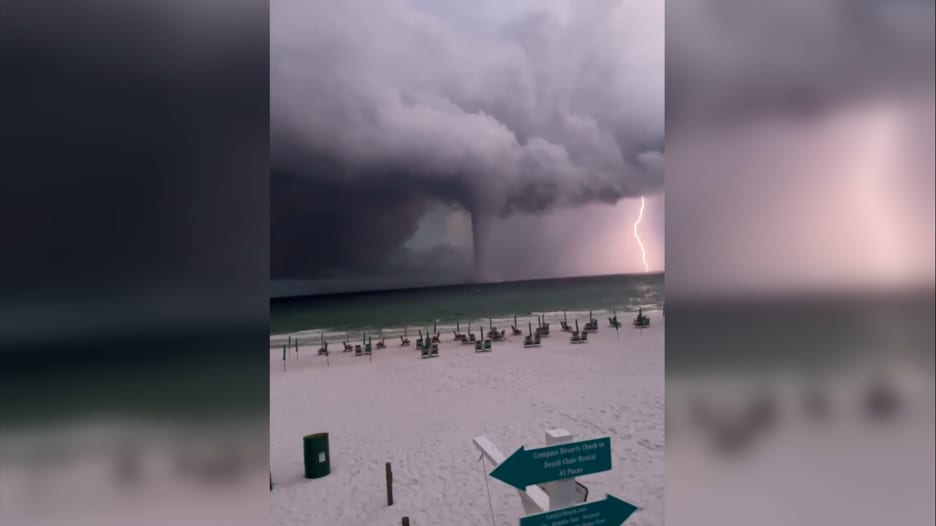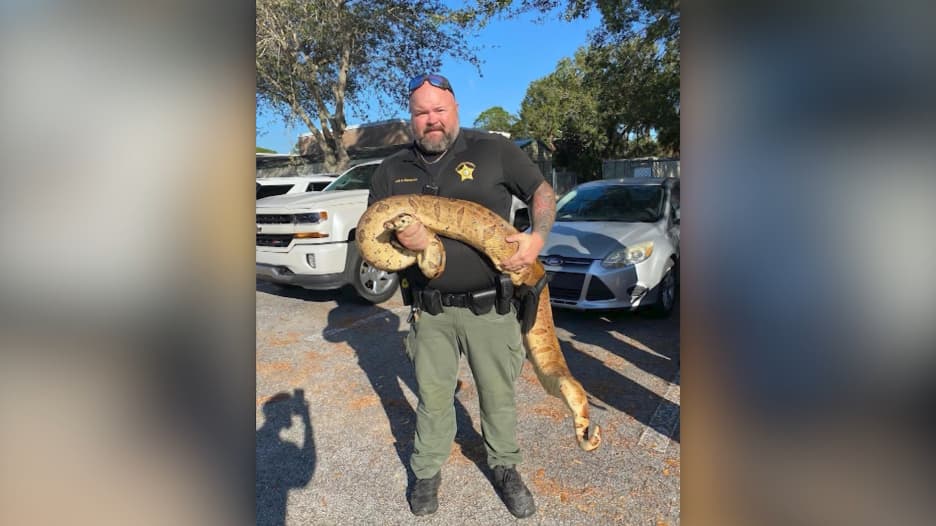دبي، الإمارات العربية المتحدة (CNN)-- تتّجه كتلة ضخمة من الأعشاب البحريّة المتشكّلة في المحيط الأطلسي إلى شواطئ فلوريدا وغيرها من السّواحل في أنحاء خليج المكسيك، ما يُهدِّد بإلقاء أكوامٍ، قد تكون خطرة، من الأعشاب كريهة الرّائحة عبر الشواطئ، وإعاقة الموسم السّياحي بشكلٍ كبير.
ولطالما ازدهرت هذه الأعشاب البحريّة، من نوع "السرجس" (sargassum)، بشكلٍ كبير في المحيط الأطلسي، واتّبع العلماء تراكماتها الهائلة منذ عام 2011.
لكن قد تكون كتلة الأعشاب هذا العام الأكبر على الإطلاق، مع امتدادها لأكثر من 5 آلاف ميل من ساحل أفريقيا إلى خليج المكسيك.
وتتّجه بقعة الأعشاب حاليًا للغرب وستمرّ عبر منطقة البحر الكاريبي وصولاً لخليج المكسيك صيفًا، ومن المتوقّع انتشار الأعشاب البحريّة على الشّواطئ في فلوريدا بشهر يوليو/تموز تقريبًا، وفقًا للباحث في معهد "هاربور برانش" لعلوم المحيطات في جامعة "فلوريدا أتلانتيك"، الدكتور برايان لابوينت.
وأفاد لابوينت أن ازدهار أعشاب "السرجس" هذا العام بدأ مبكرًا، مع تضاعف حجمها بين ديسمبر/كانون الأول ويناير/كانون الثاني.
وقال لابوينت لمراسلة CNN، روزماري تشيرش، إن الكتلة "كانت أكبر في يناير/ كانون الثاني ممّا كانت عليه في أي وقتٍ مضى منذ أن بدأت هذه البقعة الجديدة من السرجس بالنّمو منذ عام 2011"، مضيفًا أنّ هذه "ظاهرة أوقيانوغرافيّة جديدة تمامًا تخلق مشكلة كهذه، أي مشكلة كارثيّة حقًا، للسّياحة في منطقة البحر الكاريبي، حيث تتراكم على الشّواطئ ليصل عمقها إلى 5 أو 6 أقدام".
وفي باربادوس، استخدم السّكان "1600 شاحنة تفريغ يوميًا لتنظيف الشّواطئ من هذه الأعشاب البحريّة لجعلها مناسبة للسّياح والاستجمام على الشّواطئ"، بحسب ما ذكره.
ما هي أعشاب "السرجس"؟

و"السرجس" مصطلح شامل يمكن استخدامه للإشارة إلى أكثر من 300 نوع من الطّحالب البنيّة.
وتتمتّع الطّحالب بجوانب إيجابيّة عند انجرافها في البحر.
وبحسب موقع "Sargassum Information Hub"، مشروع مشترك بين مؤسّسات بحثيّة مختلفة، "توفّر هذه البيئة العائمة الغذاء والحماية للأسماك، والثّدييات، والطّيور البحريّة، والسّلطعونات، وغيرها".
وتنشأ المشاكل عند وصول هذه الأعشاب إلى الشّواطئ، فهي لا تتراكم في كتل يصعب نقلها جسديًّا فقط، بل ينبعث منها أيضًا غاز تشبه رائحته البيض الفاسد. ويمكنها تهديد الحياة في المحيط.
وأوضح لابوينت أنّها "تأتي بكميّات كبيرة لدرجة أنّها تمتص الأكسجين من الماء وتخلق ما نُشير إليه بالمناطق الميّتة"، ومن ثم أضاف: "تكون هذه عادةً موائل حاضنة لمصايد الأسماك.. ونحن نفقد هذه المواطن بمجرّد أن تصبح خالية من الأكسجين".
ويمكن لهذه الأعشاب أن تكون خطرة على صحّة الإنسان أيضًا، إذ أنّ غاز كبريتيد الهيدروجين الذي تطلقه الطّحالب المتعفّنة، سام، ويمكنه التسبّب بمشاكل في الجهاز التّنفسي.
لماذا أصبحت هذه الطّحالب مشكلة في عام 2023؟
ووفقًا للدكتور غوستافو جورج غوني، مدير قسم علم المحيطات الفيزيائيّة في مختبر الأوقيانوغرافيا والأرصاد الجوية الأطلسي، التّابع للإدارة الوطنية للمحيطات والغلاف الجوي، يمكن أن يتغيّر مستوى انتشار الأعشاب البحريّة من عام إلى آخر.
ويعتمد ذلك على العوامل البيئيّة، تمامًا كما يحصل مع النّباتات والمحاصيل على اليابسة، التي تتأثّر بتغيّر العناصر الغذائيّة، وهطول الأمطار، وظروف الرّياح.
وبحسب غوني، يمكن للتيّارات في البحر أيضًا تغيير النّمو السّنوي للطّحالب.
ويمكن للفوسفور والنّيتروجين أن يُشكّلا غذاءً للطّحالب في البحر.
كما يمكن إلقاء هذه العناصر في المحيط من الأنهار، التي تكتسب مستويات مركّزة من الفوسفور والنّيتروجين من الأنشطة البشريّة، مثل الزّراعة، وإنتاج الوقود الأحفوري، وفقًا لوكالة حماية البيئة (EPA).







